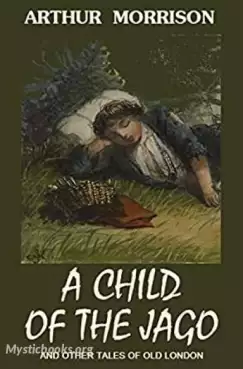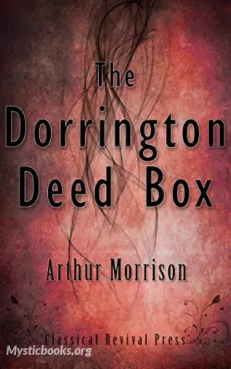
Timeline
Title
Country/Nationality
Arthur Morrison
Arthur George Morrison was an English writer and journalist known for realistic novels and stories about working-class life in London's East End, and for detective stories featuring the detective Martin Hewitt. He also collected Japanese art and published several works on the subject. Much of his collection entered the British Museum, through both purchase and bequest. Morrison's best known work of fiction is his novel A Child of the Jago (1896).
Morrison was born in Poplar in the East End of London, on 1 November 1863. His father George was an engine fitter at the London Docks. George died in 1871 of tuberculosis, leaving his wife Jane with three children including Arthur. Arthur spent his youth in the East End. In 1879 he began working as an office boy in the Architect's Department of the London School Board. He later remembered frequenting used bookstores in Whitechapel Road around this time. In 1880 Arthur's mother took over a shop in Grundy Street. Morrison published his first work, a humorous poem, in the magazine Cycling in 1880, and took up cycling and boxing. He continued to publish works in various cycling journals.
In 1885 Morrison published his first serious journalistic work in the newspaper The Globe. In 1886, after having worked his way up to the rank of a third-class clerk, he was appointed to a position at the People's Palace, in Mile End. In 1888 he was given reading privileges at the British Museum. In the same year he published a collection of 13 sketches entitled Cockney Corner, describing life and conditions in several London districts, including Soho, Whitechapel and Bow Street. In 1889 he became an editor of the paper Palace Journal, reprinting some of his Cockney Corner sketches and writing commentaries on books and other subjects, including the life of poor people in London.
In 1890 Morrison left this job to join the editorial staff of The Globe and moved to lodgings in the Strand. In 1891 he published his first book, The Shadows Around Us, a collection of 15 supernatural stories, which was not republished till 2016, by Ulwencreutz Media. In October 1891 his short story A Street was published in Macmillan's Magazine. In 1892 he collaborated with the illustrator J. A. Sheppard on a collection of animal sketches, one entitled My Neighbours' Dogs, for The Strand Magazine. Later that year he married Elizabeth Thatcher at Forest Gate. He befriended the writer and editor William Ernest Henley, publishing stories of working-class life in Henley's National Observer between 1892 and 1894. His son Guy Morrison was born in 1893.
In 1894 Morrison published his first detective story featuring the detective Martin Hewitt. In November he published a short story collection, Tales of Mean Streets, dedicating the work to Henley. This was reviewed in 1896 in America by Jacob Riis. Morrison later said that the work was publicly banned. Reviewers of the collection objected to his story Lizerunt, causing Morrison to write a response in 1895. Later in 1894 he published Martin Hewitt, Investigator. In 1895 he was invited by writer and clergyman Reverend A. O. M. Jay to visit the Old Nichol rookery. Morrison continued to develop his interest in Japanese art, to which he had been introduced by a friend in 1890. Morrison began writing his novel A Child of the Jago in early 1896. The novel was published in November by Henley. It described in graphic detail living conditions in the East End, including the permeation of violence into everyday life (it was a barely fictionalised account of life in the Old Nichol Street Rookery). Morrison also published The Adventures of Martin Hewitt in 1896. A second edition of A Child of the Jago came out in 1897.
In 1897 Morrison published seven short stories detailing the exploits of Horace Dorrington. In contrast to Morrison's earlier character Martin Hewitt, whom one critic described as a "low-key, realistic, lower-class answer to Sherlock Holmes," Dorrington was "a respected but deeply corrupt private detective," "a cheerfully unrepentant sociopath who is willing to stoop to theft, blackmail, fraud or cold-blooded murder to make a dishonest penny." These stories were collected into a book titled The Dorrington Deed-Box, also published in 1897.
In 1899 Morrison published To London Town as the final instalment of a trilogy including Tales of Mean Streets and A Child of the Jago. His work Cunning Murrell was published in 1900, followed by The Hole in the Wall in 1902. He continued to publish a wide variety of works throughout the 1900s, including short story collections, one-act plays, and articles on Japanese art. In 1906 he sold a collection of Japanese woodcuts to the British Museum. He also published a play in collaboration with his neighbour, Horace Newte.
Morrison lived and wrote successively at Chingford and Loughton.
In 1906 he donated some 1,800 Japanese woodblock prints to the British Museum. In 1911 he published an authoritative work, The Painters of Japan, illustrated with paintings from his own collection. A sixth edition of A Child of the Jago came out the same year. In 1913 he retired from journalistic work, moving to a home in High Beach in Epping Forest. The same year Morrison sold his collection of Japanese paintings to Sir William Gwynne-Evans for £4,000, who donated it to the British Museum. On 7 January 1914, in King's Hall, Covent Garden, he was a member of the jury in the mock trial of John Jasper for the murder of Edwin Drood. At this all-star event, arranged by The Dickens Fellowship, G. K. Chesterton was Judge and George Bernard Shaw appeared as foreman of the jury. Morrison's son Guy joined the army in 1914 to serve in World War I. In 1915 Morrison served as a special constable in Essex, and was credited with reporting news of the first Zeppelin raid on London. Morrison continued to publish works about art. In 1921 Guy Morrison died of malaria. Morrison was elected as a member of the Royal Society of Literature in 1924.
In 1930 he moved to his last home in Chalfont St Peter, Buckinghamshire. In 1933 he published the short story collection Fiddle o'Dreams and More. In 1935 he was elected to the Council of the Royal Society of Literature.
Morrison died in 1945. In his will he left his collection of Japanese paintings, prints and ceramics to the British Museum. He also directed that his library be sold and his private papers burned.
Books by Arthur Morrison

A Child of the Jago
A Child of the Jago is an 1896 novel by Arthur Morrison.

To London Town
In the dark underbelly of Victorian London, a city teeming with secrets and shadows, a captivating tale unfolds in "To London Town" by Arthur Morrison. Amidst the gaslit streets and foggy alleyways, a mysterious figure emerges, harboring a dark secr...

The Dorrington Deed-Box
Step into the shadowy world of crime and deception in "The Dorrington Deed-Box" by Arthur Morrison, a captivating collection of detective stories that will keep readers on the edge of their seats. Delve into the dark underbelly of Victorian London as...

Tales of Mean Streets
Arthur Morrison's "Tales of Mean Streets" is a collection of stories set in the harsh reality of London's East End during the Victorian era. The narrative explores the lives of working-class individuals, grappling with poverty, violence, and the chal...

Martin Hewitt, Investigator
Martin Hewitt, Investigator, is a collection of seven short stories set in Victorian London, each featuring the titular detective and his unnamed sidekick. These tales showcase a wide range of criminal activity, from espionage to domestic disputes, a...

Stories by English Authors: London
This collection of seven short stories by prominent English authors of the late 19th and early 20th centuries offers a rich tapestry of literary styles, tones, and themes. From the whimsical humor of J.M. Barrie to the poignant social commentary of I...

Hole in the Wall
Set in the squalid and gritty East End of London during the late 19th century, "Hole in the Wall" delves into the lives of those who frequent and run a bustling pub. The story explores themes of poverty, crime, and the struggles of the working class...